
Toxicology and Environmental Health Sciences
Scope & Guideline
Exploring the Nexus of Toxicology and Public Health
Introduction
Aims and Scopes
- Toxicological Mechanisms and Pathways:
Research exploring the molecular and cellular mechanisms by which toxic substances exert their effects on biological systems. This includes studies on oxidative stress, apoptosis, and the role of specific pathways in mediating toxicity. - Environmental Contaminants and Public Health:
Investigations into the effects of environmental pollutants, such as heavy metals, pesticides, and microplastics, on human health. This encompasses risk assessments, epidemiological studies, and health implications of exposure. - Animal Models in Toxicology:
Utilization of various animal models to study the effects of toxic substances, focusing on behavioral, physiological, and histopathological changes. This includes research on rodent models, aquatic species, and other organisms. - Natural Products and Phytochemicals:
Studies on the protective effects of natural compounds and plant extracts against toxicity, emphasizing their potential in therapeutic applications and as alternatives to synthetic chemicals. - Nanotoxicology:
Research focused on the toxicity of nanomaterials and their interactions with biological systems, highlighting both their potential applications and risks associated with exposure. - Occupational and Environmental Health:
Exploration of health risks associated with occupational exposures to chemicals and pollutants, emphasizing preventative strategies and regulatory recommendations.
Trending and Emerging
- Microplastics and Nanomaterials:
There is a significant increase in studies investigating the effects of microplastics and nanomaterials on health and the environment, highlighting their pervasive presence and potential risks. - Chemical Mixtures and Synergistic Effects:
Research focusing on the combined effects of multiple chemicals, rather than single agents, is on the rise. This trend underscores the complexity of real-world exposures and the need for comprehensive risk assessments. - Endocrine Disruptors and Reproductive Health:
The impact of endocrine disruptors on reproductive health is becoming a prominent theme, with a particular focus on developmental and long-term effects stemming from early-life exposures. - Climate Change and Toxicology:
Studies linking climate change factors, such as temperature fluctuations and altered precipitation patterns, to toxicological outcomes are emerging, reflecting the intersection of environmental science and toxicology. - Biomarkers of Exposure and Effect:
There is an increasing emphasis on identifying and validating biomarkers that indicate exposure to toxic substances and the biological effects of such exposures, enhancing the ability to assess risk and health impacts. - Phytochemicals as Protective Agents:
Research into the protective roles of phytochemicals against environmental toxins is gaining momentum, showcasing the potential of natural products in mitigating toxic effects.
Declining or Waning
- Traditional Chemical Toxicology:
Research focused solely on the toxicity of well-characterized chemical agents without consideration of newer methodologies or holistic approaches. There appears to be a shift towards integrating multi-faceted approaches that include environmental and biological interactions. - Single-Agent Toxicity Studies:
Studies examining the toxicity of individual chemicals in isolation are becoming less common. There is a growing trend towards investigating combined exposures and interactions among multiple contaminants. - Historical Environmental Contaminant Studies:
Research that primarily focuses on older contaminants, such as legacy pollutants, is declining as newer and emerging contaminants gain attention in the context of current environmental and health concerns. - In Vitro Studies with Limited Relevance to In Vivo Scenarios:
While in vitro studies remain valuable, there is a noticeable decrease in studies that do not correlate with in vivo findings or fail to address the complexity of whole-organism responses.
Similar Journals
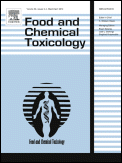
FOOD AND CHEMICAL TOXICOLOGY
Leading the way in food and chemical safety research.FOOD AND CHEMICAL TOXICOLOGY, published by Pergamon-Elsevier Science Ltd, is a prestigious journal with a significant impact in the fields of food science, medicine, and toxicology, reflecting its Q1 and Q2 quartile rankings in various categories as of 2023. Established in 1982, this journal continues to serve as an essential platform for disseminating high-quality research focused on the toxicological assessment of foods and chemicals, aiming to advance knowledge that affects public health and safety. With a pivotal role in integrating diverse disciplines, including pharmacology and agricultural sciences, the journal ranks impressively within the top percentiles—specifically 95th in Toxicology and 92nd in Food Science on the Scopus metrics. Though it operates on a traditional subscription model, the journal is committed to providing valuable insights and findings to researchers, professionals, and students across the globe, making it a vital resource in the ongoing discourse around food safety and environmental health. Its comprehensive scope underscores its importance in shaping evidence-based policies and practices.
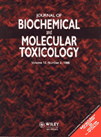
JOURNAL OF BIOCHEMICAL AND MOLECULAR TOXICOLOGY
Elevating Standards in Toxicological ResearchJournal of Biochemical and Molecular Toxicology, published by Wiley, plays a pivotal role in the advancement of knowledge within the fields of biochemistry, toxicology, and molecular biology. Established in 1998, this esteemed journal has garnered a significant reputation, evidenced by its current placement in the Q2 quartile across several categories, including Biochemistry, Health, Toxicology and Mutagenesis, and Medicine. With an ISSN of 1095-6670 and an E-ISSN of 1099-0461, it serves an international audience, offering critical insights and innovative research that shape our understanding of biochemical interactions and toxicological assessments. While it does not operate on an open-access model, the journal ensures rigorous peer review and high-quality publication standards, making it a valuable resource for researchers, professionals, and students dedicated to the exploration of molecular toxicology. The journal's recognized impact within the scientific community is reflected in its competitive rankings among specialized journals, fostering significant contributions to both academic and applied contexts.
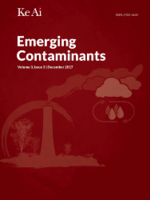
Emerging Contaminants
Transforming environmental challenges into actionable insights.Emerging Contaminants is a leading international journal dedicated to the exploration and analysis of novel pollutants, their effects, and the methodologies for their detection and remediation. Published by KEAI PUBLISHING LTD in China, this Open Access journal has been at the forefront of scientific discourse since its inception in 2015, allowing unrestricted access to cutting-edge research. With an impressive categorization in the top Q1 quartile across diverse fields, including Health, Toxicology and Mutagenesis, and Public Health, it ranks remarkably high—41st out of 665 in Public Health and 10th out of 133 in Toxicology according to Scopus metrics, demonstrating its vital role in advancing our understanding of environmental health risks. By bridging the gap between academia and practical applications, Emerging Contaminants not only enriches the scientific community but also serves as an essential resource for policymakers and industry leaders seeking effective solutions to environmental challenges. Researchers, professionals, and students alike are encouraged to engage with the journal’s comprehensive studies and findings, contributing to a sustainable future.

BULLETIN OF ENVIRONMENTAL CONTAMINATION AND TOXICOLOGY
Investigating the effects of pollutants on human health.BULLETIN OF ENVIRONMENTAL CONTAMINATION AND TOXICOLOGY, published by SPRINGER, is a pivotal journal in the fields of Environmental Science, Toxicology, and Public Health. With a strong history of dissemination since its inception in 1966, the journal predominantly focuses on the latest advances in understanding environmental contaminants and their toxicological effects on health and ecosystems. It currently holds a respectable Q2 ranking across multiple categories including Health, Toxicology and Mutagenesis, Medicine (miscellaneous), and Pollution, as per the 2023 metrics. While the journal is not Open Access, it provides an invaluable platform for researchers, professionals, and students seeking to contribute to and stay informed on critical issues regarding environmental hazards and their implications. With an engaged community of scholars and practitioners, this journal continues to be an essential resource for addressing the pressing challenges of environmental contamination and its health impacts, guiding future research and policy decisions.

ARCHIVES OF TOXICOLOGY
Exploring the Complexities of ToxicologyARCHIVES OF TOXICOLOGY is a prestigious journal published by Springer Heidelberg, dedicated to advancing research in the field of toxicology and related disciplines. With a distinguished history dating back to 1930, this journal has continuously provided vital insights and groundbreaking studies, making it a cornerstone in the areas of health, toxicology, and medicine. Recognized for its high impact, it occupies a top-ranking position in Scopus, with remarkable quartile placements in 2023, categorizing it as Q1 in Health, Toxicology and Mutagenesis, and Q1 in Medicine (Miscellaneous). The journal highlights critical research and innovative methodologies, appealing to a diverse audience of researchers, professionals, and students committed to understanding the complexities of toxic substances and their implications for public health and environmental safety. The journal does not currently offer open access, allowing for a more traditional but rigorous peer-review process that ensures the quality and integrity of every published article. Join the global discourse in toxicological science with ARCHIVES OF TOXICOLOGY, where every contribution furthers the understanding of safety and toxicity in our world.

Molecular & Cellular Toxicology
Exploring the intricate links between toxicity and health.Molecular & Cellular Toxicology, published by the Korean Society Toxicogenomics & Toxicoproteomics (KSTT), is a significant journal in the field of toxicology, providing crucial insights into molecular mechanisms underlying toxic responses. With an ISSN of 1738-642X and E-ISSN 2092-8467, this journal serves as a vital platform for researchers, professionals, and students interested in the latest findings and advancements in toxicology, health, and environmental science. Although it operates under a subscription model, it maintains rigorous peer review standards, contributing to its respectable Q3 classification in Health, Toxicology and Mutagenesis, and its Q2 standing in Pharmacology, Toxicology, and Pharmaceutics. The journal, intersecting with innovative aspects of pharmacology and public health, aims to foster a deeper understanding of toxicological impacts on cellular processes and overall health. Located in Germany and supported by a dedicated editorial board, Molecular & Cellular Toxicology stands out in the academic community, encouraging interdisciplinary discourse and collaboration to address critical toxicological challenges. Engage with us for cutting-edge research that informs and shapes the future of toxicological science.

CHEMICAL RESEARCH IN TOXICOLOGY
Unveiling the complexities of chemical toxicity for a safer future.Chemical Research in Toxicology is a premier journal published by the American Chemical Society, dedicated to advancing the understanding of toxicological effects associated with chemical substances. Since its inception in 1988, this esteemed journal has maintained a robust impact factor, ranking in the Q1 quartile for both Medicine (miscellaneous) and Toxicology as of 2023, reflecting its significance and influence in the fields of pharmacology and toxicology. With an impressive Scopus ranking at #16 out of 133 in the Toxicology category, it serves as a vital resource for researchers, professionals, and students seeking cutting-edge insights and scholarly articles that bridge the gap between chemistry and toxicological science. Although not an open-access publication, it continues to provide comprehensive analyses and original research that inform safe chemical practices and regulatory policies, further enhancing its role in public health and safety.

Toxicological Research
Bridging science and safety in the field of toxicology.Toxicological Research is a prominent academic journal dedicated to advancing the field of toxicology through rigorous exploration and innovative research. Published by the Korean Society of Toxicology, this journal serves as a vital resource for researchers, professionals, and students engaged in environmental science, pharmacology, and toxicology. With an ISSN of 1976-8257 and an E-ISSN of 2234-2753, Toxicological Research highlights significant findings and discussions in the realm of health, toxicology, and mutagenesis. Although not an open-access journal, it maintains a solid reputation as evidenced by its Q3 ranking in both health-related toxicology and general toxicology categories for 2023. The journal covers a broad spectrum of topics from fundamental research to applied toxicology and provides a unique platform for the dissemination of knowledge in a field that is increasingly relevant in today’s society. With an anticipated convergence period from 2008 to 2024, Toxicological Research continues to contribute vital insights to understanding the implications of toxic substances on health and the environment.
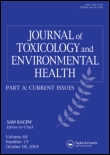
JOURNAL OF TOXICOLOGY AND ENVIRONMENTAL HEALTH-PART A-CURRENT ISSUES
Exploring Contemporary Challenges in ToxicologyJOURNAL OF TOXICOLOGY AND ENVIRONMENTAL HEALTH-PART A-CURRENT ISSUES, published by Taylor & Francis Inc, stands as a key resource in the interdisciplinary field of toxicology and environmental health. Operating under the ISSN 1528-7394 and E-ISSN 1087-2620, this journal maintains a strong presence with a Q2 category ranking in Health, Toxicology and Mutagenesis and a Q3 ranking in Toxicology as of 2023. It aims to disseminate critical findings that address contemporary issues in toxicology and environmental health, emphasizing the implications of environmental agents on human health. The journal offers both subscription and open access options, making cutting-edge research accessible to a diverse readership. With coverage of key topics from 1998 to 2024, it is an essential platform for academics, professionals, and students seeking to stay at the forefront of environmental health sciences.
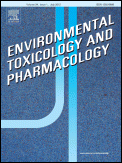
Environmental Toxicology and Pharmacology
Exploring the intersection of pollutants and biology.Environmental Toxicology and Pharmacology, published by Elsevier, is a leading journal dedicated to advancing our understanding of the effects of environmental pollutants on biological systems. With an ISSN of 1382-6689 and an E-ISSN of 1872-7077, this journal covers a wide range of studies related to toxicology, pharmacology, and environmental health. The journal is classified as Q2 in key categories such as Health, Toxicology and Mutagenesis and Medicine (miscellaneous), and sits impressively in Q1 for Toxicology, reflecting its strong impact in the field. As of 2023, it ranks #30 out of 133 in Toxicology and #40 out of 148 in Health, indicating its high relevance and contribution to research. While the journal is not currently open access, it remains a pivotal resource for researchers, professionals, and students seeking to explore the intricacies of environmental health effects. Its commitment to publishing high-quality peer-reviewed research positions it as a crucial platform for scientific dialogue and discovery.